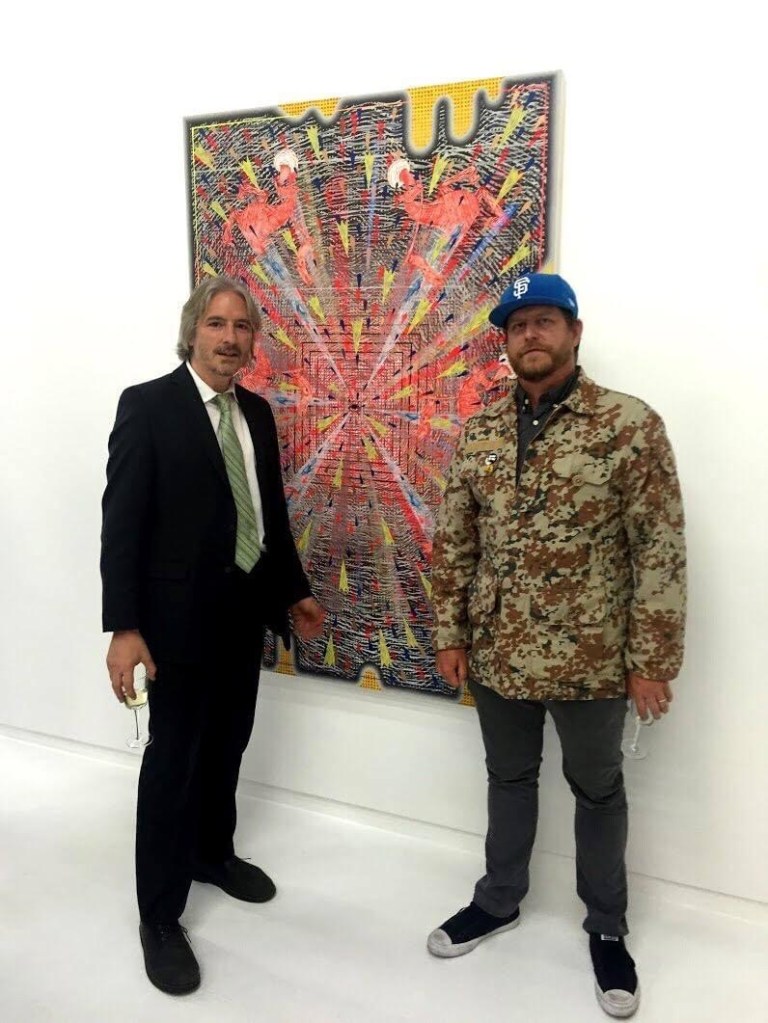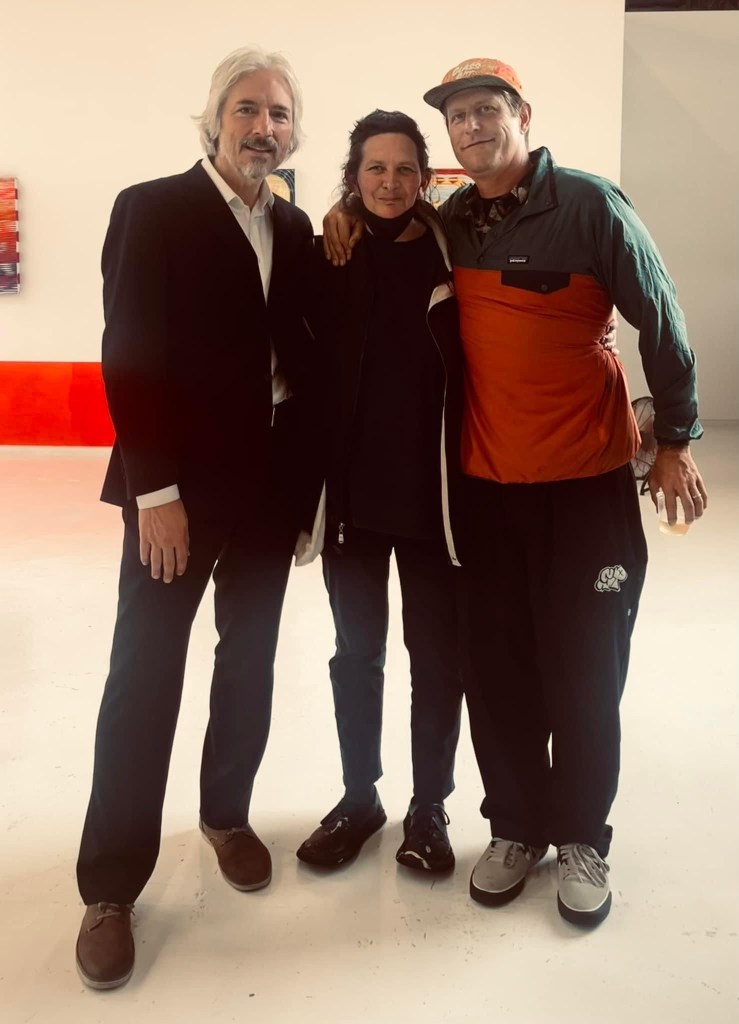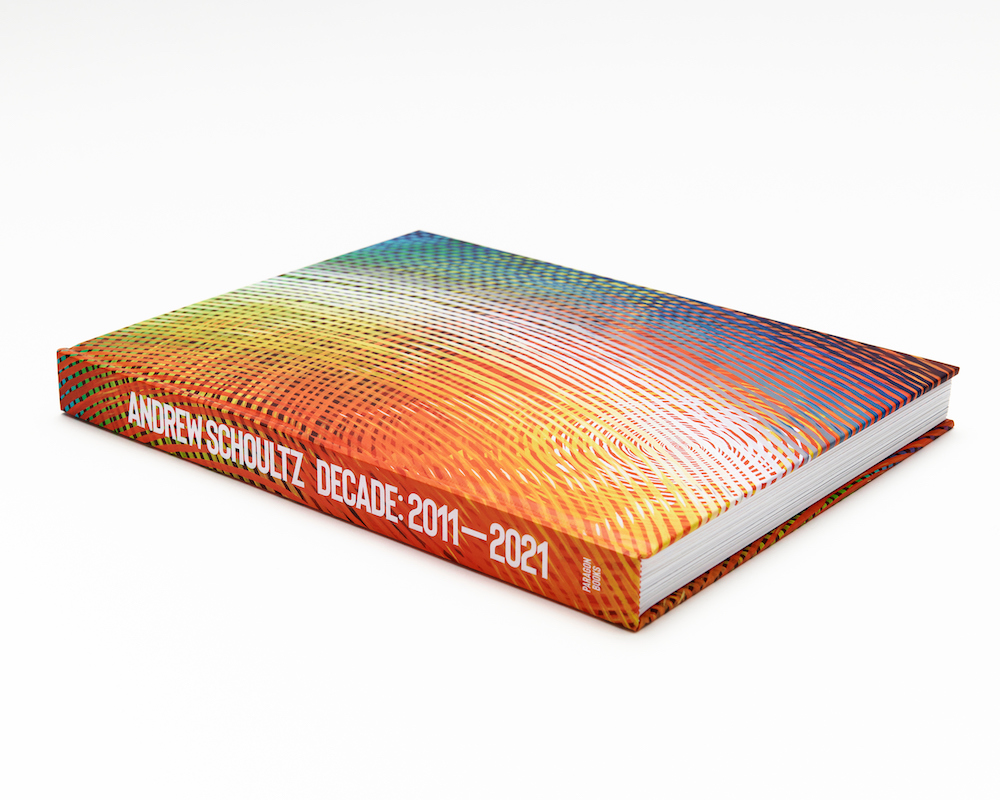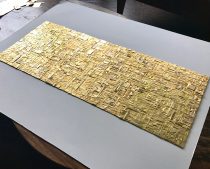first published as the Afterword to Andrew Schoultz, Decade: 2011-2021 (Berkeley: Paragon Books, 2022)

Andrew Schoultz, DECADE: 2011-2021
by Matt Gonzalez
Twenty-five years ago, Andrew Schoultz left Wisconsin for California to pursue the things he liked most: skateboarding and art. It’s questionable whether even the surefooted Schoultz imagined the journey would lead him to a distinguished art career. In Wisconsin he experienced the general malaise of economic depression that urban cities across America faced in the mid 1990s compounded by a provincialism that limited his opportunities. After various travels with pro-skaters around parts of the country, he relocated to San Francisco and found a coterie of like-minded people. An epicenter of graffiti and skateboard culture, it was also a city besieged by the emergence of early tech company gentrification, the “dot com boom” as it was then known, which formed the foundation of Schoultz’s early political engagement. The city, for whatever challenges it had, was ripe for the activities he most preferred and offered Schoultz an opportunity to paint murals and eventually showcase his maturing artwork.
When Schoultz arrived in 1997, he was twenty-two years old. He quickly familiarized himself with the legendary skating and graffiti spots around San Francisco he had previously only known through skateboarding videos. His timing landed him in the midst of an art scene and movement that didn’t even have a name yet. In 2002, Glen Helfand would christened it “the Mission School”, a moniker that stuck despite its own adherents being initially leery of it. A few years earlier, in 1997, the artists now most closely associated with the movement were just starting to be known in the art world. Barry McGee, Margaret Kilgallen, Chris Johanson, Alicia McCarthy, and Ruby Neri, were five to nine years older than Schoultz and were in the midst of launching careers just as he arrived in San Francisco at venues such as Four Walls, the Luggage Store, 111 Minna Street, The Lab, Adobe Books, Figure 5, New Langton Arts, Southern Exposure, and Jack Hanley Gallery. The first Bay Area Now group show at the Yerba Buena Center for the Arts featured the new emerging aesthetic the very year Schoultz arrived. These artists would quickly expand their geographic reach, showing at Alleged Gallery and Deitch Projects in New York City, and at New Image Art in Los Angeles.
Rooted in folk art, skateboard, surf, and graffiti culture, Schoultz fit right into the Mission School because of his youthful forays into its core values. In Milwaukee, Schoultz had started BMX freestyling which naturally led to skateboarding. His early fascination with copying comic books further grounded him in the cartoon and sign painting that comprised some of the principal ideals of the movement. Schoultz wasn’t performative in his connection to street culture ideas; he was living them. From run-ins with the law for graffiti writing to being a pro-quality skateboarder, sponsored by successive board companies, to making art on found wood, he embodied a DIY creed in close association and proximity to the leading Mission School artists.

Initially working clandestinely, Schoultz collaborated on murals with artists Zara Thustra and Aaron Noble, in the Nob Hill and China Basin neighborhoods. Later, he painted solo murals in the Mission District. In 2000, he asked to be one of the artists working on the Clarion Alley Mural Project, which organized dozens of murals along a one block corridor between Valencia and Mission streets in a notoriously gritty alley. Schoultz’s approximately 600’ x 600’ mural “F#?KIN” Dot Com” was a commentary on the gentrification caused by the early tech bubble in San Francisco. The next year, under the mentorship of Ray Patlán, Schoultz painted a 12’ x 32’ mural “SF City Limits” along another Mission block, Balmy Alley. Patlán fostered anti-establishment sentiments, having once painted an anti-war mural in Saigon during the Vietnam War, while serving in the U.S. Army. Schoultz’s most well-known collaboration at the time was with Aaron Noble on 18th and Lexington Streets, the 34’ x 100’ mural “Generator”, was a mainstay of the urban vista for thirteen years.
Schoultz’s gallery exhibitions grew organically out of these engagements. Darryl Smith and Laurie Lazer of the Luggage Store Gallery, which had been a fomenting space for contemporary artists, took notice. They arranged to exhibit Schoultz’s work in a window of the front space they lived in on Haight Street near Webster Street, which would later be fully renovated and operated as an auxiliary gallery, along with their space 509 Cultural Center in the Tenderloin, where Schoultz also exhibited.
Like many of the artists in the scene, including Chris Johanson, who had shown at venues such as Cafe Picaro and Cafe Nidal in 1992 and 1997, respectively, Schoultz made opportunities happen wherever he could. His first art show at Cafe International, on Haight and Fillmore streets, presented approximately twenty artworks priced $100 to $200. Schoultz’s show sold out, which served as a big confidence boost. Though the prices were relatively modest, in the aggregate it paid the rent for a few months and gave Schoultz a belief in himself that all young artists need to keep developing.

Schoultz became known for having an unparalleled work ethic. His output was prodigious, bordering on obsessively compulsive. Not because the work was easy to make; but rather, because he worked incessantly and had an attention to detail that highlighted his drawing ability. Slowly, his mark making became familiar, even ubiquitous.
Between 2000 and 2003 Schoultz was included in group exhibitions at Yerba Buena Center for the Arts, Southern Exposure, New Image Art (in Los Angeles), 509 Cultural Center, New Langton Arts, and Intersection for the Arts. In 2003, Schoultz travelled to Yogyakarta, Indonesia with Alicia McCarthy and others where they worked with the Apotik Komik collective on a six-week cross-cultural mural painting project. Schoultz’s panoramic world view and critique of globalization expanded and sharpened. Between 2000 and 2004 Schoultz had solo exhibits in Detroit, St. Paul, Santa Monica, Portland, and Culver City. San Francisco’s Bucheon Gallery, in the Hayes Valley neighborhood, gave him his first one-person gallery exhibition in 2004.
Twenty-five years after leaving Wisconsin, Schoultz is no longer a twenty-something year old kid with long hair. Living in Los Angeles since early 2014, he still skateboards and paints incessantly. But he has also matured; influenced by having a family of his own. With his wife, artist Hilary Pecis, and their son Apollo, he has learned to navigate the complex art world not just as an individual but as a family.
Schoultz’s repeating detailed line work, recognizable iconography, and sense of politics exuding behind every scene, with apocalyptic foreboding always seemingly present. These elements have remained strong in the ensuing two decades. Schoultz is a chronicler beginning with the last quarter of the 20th century, depicting the excesses and decline of the American empire. Narrating economic crises, seemingly endless military engagements abroad, increasing wealth disparity, globalization, and environmental degradation, Schoultz endeavors to paint the moment. He does so by depicting a unique visual microcosm, a portal into an alternative world filled with a chorus of his signature symbols including war horses, flying birds, arrows, tornados, supplicants in prayer-like poses, the Eye of Providence, broken bridges and telephone poles, and shards of money swirling about. All of it portends some epic post-apocalyptic moment and event. There are ships and castles, amphoras, helmets, banners, giving it a medieval quality. The creatures he renders are often anthropomorphic, with human and animal qualities, suggesting the duality of human nature. He increasingly has experimented with color scale gradation creating an Op Art effect projecting movement within the often cataclysmic compositions. Importantly, his narrative isn’t a mandatory one. Viewers are allowed to make what they will of it, but Schoultz employs a repertoire of images that emit a quality that he does direct subtly.

Schoultz has always been a devotee to the importance and cultural awareness of the public plaza. From his beginnings pursuing unsanctioned graffiti writing to murals along the urban canopy, Schoultz has always wanted his art available to anyone regardless of social standing. He is well aware that who sees and interacts with art in the public space is different from those who attend gallery exhibitions. Thus, despite his success, he always returns to making public art. When working within the confines of the gallery, what some refer to pointedly as the “white cube”, Schoultz likes to transform a space and make it his own. Partially augmenting the work on the walls, he always includes a component of installation, with sculptural elements, allowing visitors to feel some of the energy he depicts in the paintings. Navigating and walking through the sculptural landscape, fabricated tanks, columns, and arrows, or sitting on benches he’s both made and decorated, invites a new relationship to the space. He disrupts expectations in this way as once familiar spaces are altered, thus also making it something other than a staid gallery setting. The ephemeral nature of installations, just like writing graffiti that you know will inevitably be covered, links the enterprises, but regardless of time, the visual impact lives on in experience and memory.
Schoultz has had many accolades and evidence of his success over the years. His art was paired with Paul Klee’s in the Carl Djerassi Gallery space at SFMOMA in 2011 and is in public collections including the Berkeley Art Museum, Crocker Museum of Art, Los Angeles County Museum of Art, Honolulu Art Museum, Palm Springs Art Museum, Monterey Art Museum, and the San Francisco Museum of Modern Art. He continues to show internationally, in cities such as Toronto, Havana, Copenhagen, Milan, Cologne, Rotterdam, Mexico City, Brussels, London, Wuppertal, and Paris.
As he completes his first quarter century of making art, Schoultz’s iconography remains as rich and vibrant as it always has been; it resonates deeply and is singular and incomparable.
